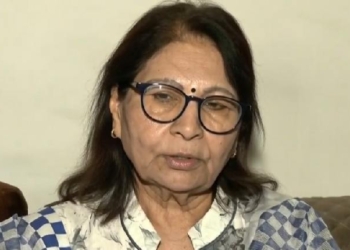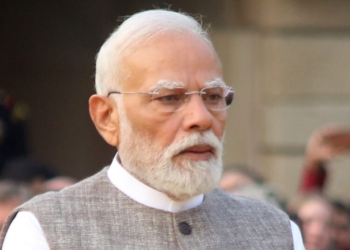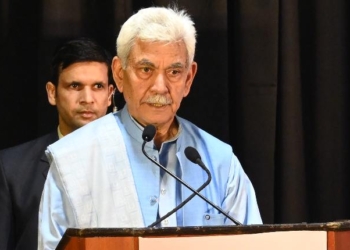New Delhi: The CJI has announced that he will soon be constituting a seven-judge constitutional bench to decide on the pleas concerning the Money Bill.
The matter of the money bill has courted several controversies since the Modi government passed the Aadhaar Act in 2016.
According to the Indian constitution, the Money Bill is a bill in which the Rajya Sabha has no power to amend or reject. It can make suggestions but the Lok Sabha’s say is final.
Article 110 of the Indian constitution describes a money bill as a bill that has provisions regarding imposition, abolition, remission, alteration or regulation of any tax; regulating government borrowings and financial obligations, custody, and flow of funds from the Consolidated Fund of India (CFI).
It has been alleged by the opposition that since the government lacked majority in the Rajya Sabha, it introduced the Bill as a money bill to bypass the Rajya Sabha.
Similar controversies arose when the government passed the amendments to the Prevention of Money Laundering Act (PMLA), making significant changes to the powers of the Enforcement Directorate (ED).
When the government passed the Finance Act 2021 and made amendments to the LIC Act, petitions were filed against the amendment on several grounds including that it should not have been passed as a money bill.
Here’s how the bench’s decision on the constitutionality of these amendments could impact the status quo:
Adhaar
Since the seven-judge bench will be considering the scope of Article 110 it will also look into the Adhaar judgement in KS Puttaswamy v Union of India case.
In the above-mentioned case, taking a majority view a five-judge SC bench headed by the then CJI Deepak Misra held that the Aadhaar (Targeted Delivery of Financial and Other Subsidies, Benefits and Services) Act, 2016 was correctly passed as a Money Bill.
The majority judgement held that the Aadhaar Bill was a Money Bill as it had a substantial nexus with the appropriation of funds from the Consolidated Fund of India.
The view of substantial nexus was introduced by the majority judgment.
Interestingly, the present CJI Chandrachud who was also part of the 5-judge bench took the minority view and held that the Aadhaar Bill was not a Money Bill.
Saying that the majority view requires reconsideration, the minority view submitted that the majority has introduced a test of “substantial nexus with the appropriation of funds and direct connection” which will help future governments to bring any Bill with just one provision that has a substantial nexus with the CFI.
The minority view further pointed out that Article 112(3) of the Indian constitution clearly defines the expenditure charged on the CFI. So, the expenditure under the Adhaar scheme would be “incurred” and not charged from CFI.
Later while looking into the validity of Finance Act, 2017 as a Money Bill, another 5-judge bench of the Supreme Court went through the Adhaar judgement and observed that it did not discuss the significance of the word “only” in Article 110(1).
The 5-judge bench then referred the batch of matters to a larger constitutional bench.
LIC IPO
In May 2022, while referring the issue to a larger bench, the apex court issued several notices to the Centre concerning the petitions challenging the government’s move to introduce IPO for Life Insurance Corporation (LIC)
As a part of its disinvestment policy, the Centre introduced the LIC IPO on May 4, 2022, to sell 5 per cent of its stake.
The petitions argued that the amendments made to Section 28 of the LIC Act 1956 via the Finance Act of 2021 altered the nature of LIC from a mutual benefit society to a joint stock company. Because of this, there will be an expropriation of surplus from policyholders which will be distributed among the shareholders, the petitions held.
The Centre had submitted before the apex court that since the petitioners approached the court at the last moment, an interim relief should not be granted.
The court did not grant the interim relief, however, it referred the issue to the larger bench.
The insurance giant controls more than 68 per cent of the insurance market in India.
PMLA
In July 2022, the apex court upheld the 2019 amendments made to the PMLA, 2002 that deal with ED’s power of arrest, attachment, and search and seizure. The amendments made it nearly impossible for the accused to secure bail. It also shifted the burden of proof of innocence onto the accused rather than the ED.
While observing that the Parliament had the power to make these amendments the court said that the Parliament enacted PMLA as a result of international commitment to sternly deal with the menace of money laundering.
However, since the Centre brought in the changes through the Finance Act 2019, the Supreme Court has left the question of deciding whether the said amendments could be brought in as a Money Bill on the soon-to-be constituted 7 Judge Constitutional bench.
If the bench decided that the 2019 amendments could not have been brought in as a Money Bill then these amendments would become invalid.
PMLA has seen many high-profile cases, following raids by the ED. Currently, the former Delhi deputy chief minister Manish Sisodia is also facing charges under the PMLA. The apex court will continue listening to his bail plea on Thursday.
The seven-judge constitutional bench will address the question of whether or not these Acts mentioned above could have been brought in as a Money Bill.
(IANS)















